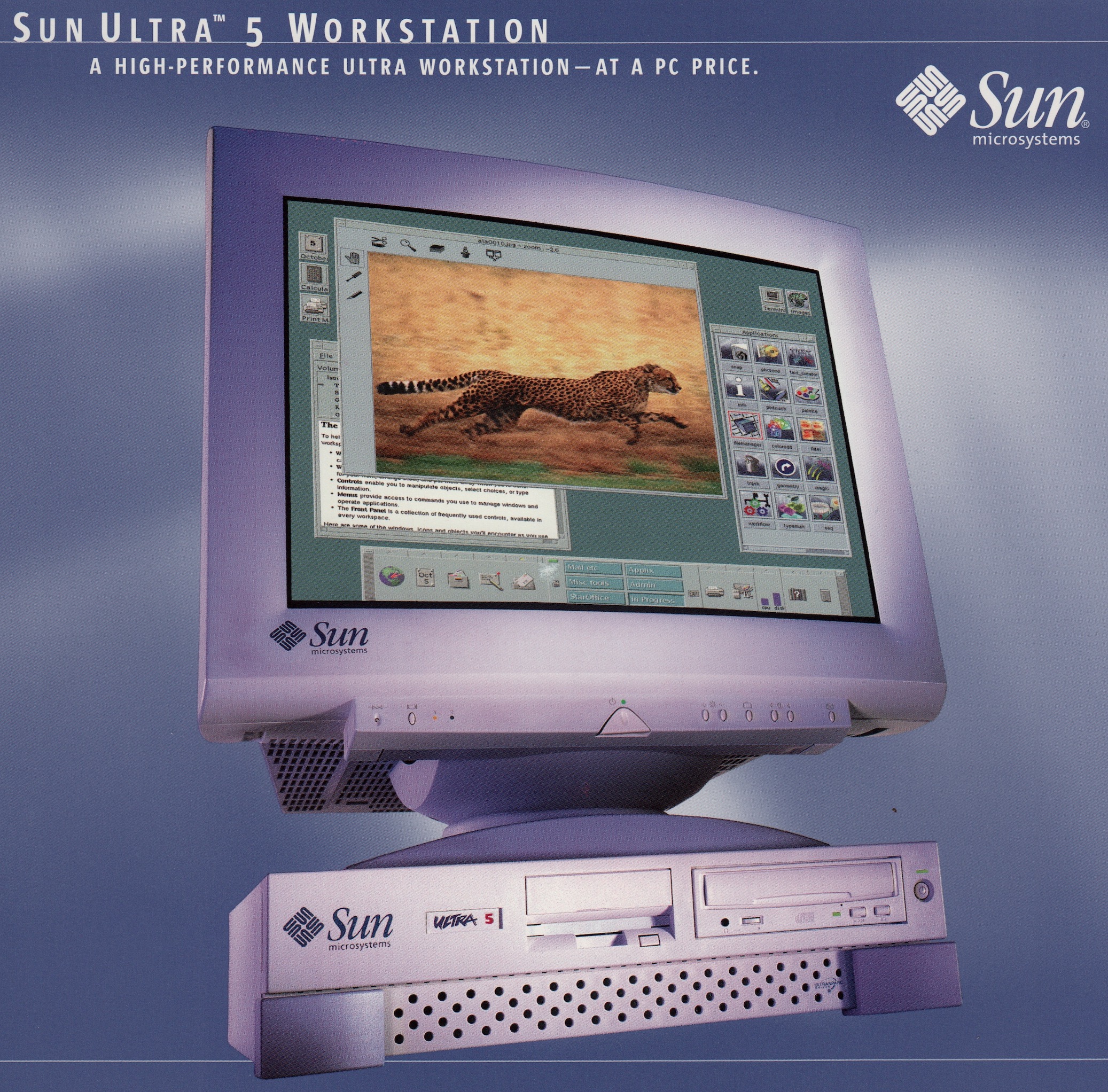Sun Ultra 5
Gallery

Image taken from product brochure - ©Sun
Technical Specifications
| Model: | Sun Ultra 5 |
|---|---|
| Codename: Platform: |
Otter (A21) sun4u |
| Processor: Math Copro: |
UltraSPARC IIi (in CPU) |
| Clock Speed: | 270, 333, 360, 400MHz |
| RAM: | |
| Graphics: | |
| Operating System: | |
| Introduced: | January 1998 |
| Dealer price (net): |
The Sun Ultra 5: The Affordable UltraSPARC Desktop
Introduced in January 1998, the Sun Ultra 5 (codenamed "Otter") was a significant release in the UltraSPARC lineup, aiming to bring the power of the 64-bit architecture to a more affordable price point for a wider audience. It was positioned as an entry-level workstation, succeeding the earlier SPARCstation Classic and LX in providing a cost-effective desktop Unix experience.
The Ultra 5 was powered by the UltraSPARC IIi processor, an integrated variant of the UltraSPARC II designed for lower-cost systems. It was available with CPU speeds ranging from 270 MHz to 400 MHz. To reduce costs, the Ultra 5 notably adopted IDE hard drives instead of the more common (and expensive) SCSI drives found in previous Sun workstations. It also utilized PC-style components in some areas, which, while making it more affordable, initially drew some criticism from traditional Sun users.
Despite these cost-saving measures, the Ultra 5 was a capable machine for its time, running the 64-bit Solaris operating system and benefiting from the extensive software ecosystem. It featured PCI expansion slots, a departure from the SBus of earlier SPARCstations, reflecting the industry's shift towards PCI. While it lacked the high-end graphics options of its more expensive siblings like the Ultra 10 or Ultra 60, it was well-suited for general office tasks, software development, and internet access. The Ultra 5, along with the slightly more expandable Ultra 10, was a commercial success for Sun. It made Solaris and the UltraSPARC architecture accessible to a broader market, including educational institutions and small businesses. Its affordability and the stability of Solaris contributed to its popularity.
The Sun Ultra 5 is remembered as the machine that brought 64-bit UltraSPARC computing to the masses. While it may have foregone some of the high-end features of earlier or more expensive models, its impact on expanding the reach of the Solaris platform was undeniable.